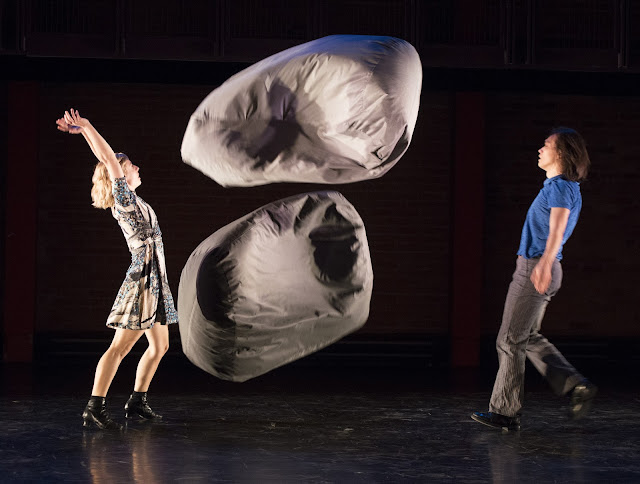EIFMAN
BALLET
-
ST. PETERSBURG -
presents
RODIN
The use of large pieces of fabric in order to create sculptural reliefs, and the frequent tableaus of human bodies arranged in pyramid fashion, or draped on large grid like structures provide impressive, fleeting scenes that add to the general pastiche effect of the narrative.
The opening sequences in the asylum where Claudel has been confined are at times both lilting and haunting, yet frequently dwell upon simplified movement that possesses a kind of one note style and effect. The varied and complex shades of mental illness are reduced to rather predictable, simplistic grimaces and physical contortion. The execution of these gestural citations by the company is flawless, yet marked by choreography that loses some of its impact through repetition and uniformity.

In the second act a kind of folk dance, grape crushing scene is a lively contrast to the seriousness of act one, yet detaches from the central narrative in a somewhat confusing manner. Similarly, a can can sequence, although beautifully performed, skirts the Rodin/Claudel theme, and appears somewhat random.
Nevertheless, the overall program, depicting the life and loves of a brilliant and notorious sculptor is a breathtaking, eclectic pastiche of sight and sound. With selections from Maurice Ravel, Camille Saint-Saëns, Jules Massenet, and Erik Satie, the general mood is at once romantic, harrowing, heart thumping, and even lighthearted. And there is a subtly performed 'catfight' between two of Rodin's paramours that moves the seriousness of the scene into a rather unexpected moment of entertaining camp.
Some of the tones set by this varied collection of choreographic styles and design elements, including second act scenography that is reminiscent of the set for Jailhouse Rock, may have been unintentional, slightly comic gestures. But they do serve to add life and vitality to an evening of great physical agility, gorgeous balletic gestures, and torturous emotion. And the bodies (simulated nudity included) are heavenly.
at the sony centre May 23-25













